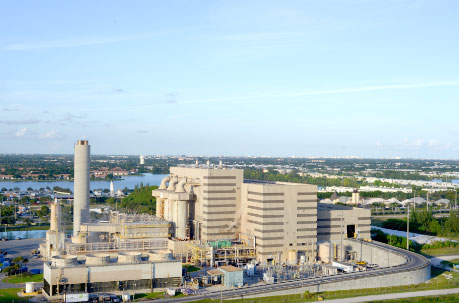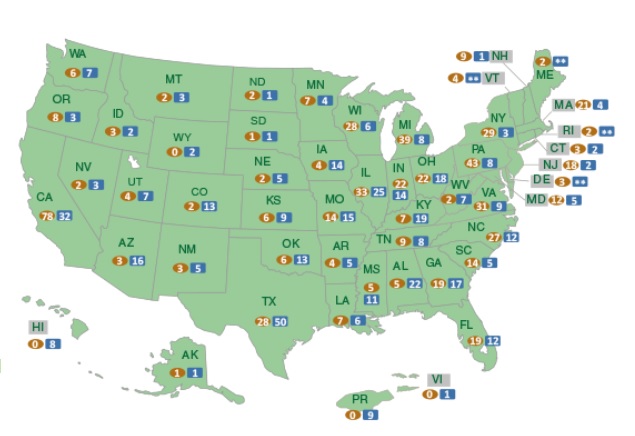Landfills produce renewable energy from waste.
When you think about renewable energy, what comes to mind? Perhaps you picture wind turbines, solar panels or the underground loops of geothermal systems. What you might overlook is a source derived from waste products – the stuff we discard every day.
If that’s the case, you’re not alone. Even though the Environmental Protection Agency (EPA) endorses landfill gas as a renewable source of energy, right up there with wind and solar, it’s not top-of-mind for most.
At Waste Management, we think about transforming waste materials into energy every single day. In fact, for decades we’ve applied science with creative thinking and problem-solving to derive value from waste.
We’re the largest landfill-gas-to-energy (LFGTE) developer and operator in North America. We operate 130 LFGTE projects at landfills across the country, and we generate enough energy – more than 4.6 million megawatt-hours per year of capacity – to power 460,000 homes.
The LFGTE process is proven, straightforward and efficient. An elaborate system of wells and pipes transports and processes landfill gas, which is a natural byproduct of waste decomposition. The gas is then filtered and compressed so it is usable as fuel. From there, it’s transported to a nearby facility where it powers a set of engines connected to an electrical grid, and sold to public utilities, municipal utilities and power cooperatives.
Think Renewable Natural Gas
Beyond power generation, we’re also a leader in converting landfill gas into clean natural gas fuels that can be distributed for residential, industrial and transportation use.
Renewable natural gas (RNG), or biomethane, is a pipeline-quality gas that is fully interchangeable with conventional natural gas and thus can be used in natural gas vehicles. RNG is essentially biogas (the gaseous product of the decomposition of organic matter) that has been processed to specific purity standards. Like conventional natural gas, RNG can be used as a transportation fuel in the form of compressed natural gas (CNG) or liquefied natural gas (LNG). LNG is natural gas in its purified and liquefied form.
In June 2018, we unveiled the latest addition to our RNG facilities at the Outer Loop Recycling and Disposal Facility in Louisville, Kentucky. Using state-of-the art technology, the facility captures methane and converts it to pipeline-quality natural gas. The Outer Loop facility produces enough RNG each day to fuel about 800 of our CNG collection trucks.
We also operate two other RNG facilities. At the Milam Landfill in East St. Louis, Illinois, purified gas from the landfill is placed into the Ameren Illinois pipeline. The facility produces about 13,600 diesel gallon equivalents (DGE) per day of RNG, enough to fuel about 620 of our CNG collection trucks. At the American Landfill RNG Facility in Waynesburg, Ohio purified gas from the landfill is placed into the Dominion East Ohio pipeline. The facility produces about 3,600 diesel gallon equivalents (DGE) per day of RNG.
This year, we have two more RNG projects under development at the Skyline Landfill in Ferris, Texas, with completion scheduled for Q4 2019, and the Williamson County Landfill in Hutto, Texas, with completion scheduled for Q1 2020.
With Linde North America, WM pioneered our first facility to produce natural gas from landfill gas. Our Altamont Landfill in Livermore, California, and has produced renewable liquefied natural gas (LNG) since 2009. Landfill gas at the Altamont Landfill is captured and converted into RNG. Our fleet of transfer trucks traveling between our Davis Street Transfer Station and the landfill are fueled exclusively with this renewable fuel! The facility creates 6,300 gallons per day of RNG or about 3,750 diesel gallon equivalents (DGE) per day, enough to fuel about 170 of our CNG collection trucks.
Natural gas produced from landfill gas now fuels 32 percent of our natural gas trucks.
Think Solar
Back to our clean energy word association game. When you hear solar, do landfills come to mind? Well, they should, because the sizable geographic footprint of landfills and their proximity to existing infrastructure make them ideal locations for large-scale solar installation.
The EPA recognizes and promotes the application of solar through its RE-Powering America’s Land initiative encouraging renewable energy development on contaminated lands, landfills and mine sites. At Waste Management’s closed L&D Landfill site in New Jersey, Public Service Electric and Gas Company (PSE&G) constructed one of the largest landfill-based solar farm projects in the country. In Massachusetts, we collaborated with two project developers and the state Department of Environmental Protection to install four solar farms on closed landfills. PSE&G is also finalizing the commissioning of a solar farm at Waste Management’s closed site at Cinnaminson in New Jersey. This year, we’re also planning to deploy solar on some of our facilities in California. These projects add up and translate to more than 50 MW and growing of power utilizing solar!
All of these innovative technologies are transforming waste stream materials into high-value resources. That’s what we do at Waste Management – and how we think differently about renewable energy.
Article by Jim Fish – CEO of Waste Management Inc
Read original post: https://www.linkedin.com/pulse/think-waste-renewable-resource-jim-fish/
 The 2015 U.S. plastic bottle recycling rate posted a slight decrease of 0.6 percent compared with 2014, according to the figures released by the
The 2015 U.S. plastic bottle recycling rate posted a slight decrease of 0.6 percent compared with 2014, according to the figures released by the 








